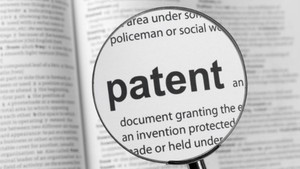The World Health Organization (WHO) has proposed a system of naming for biosimilars, which has been commended by some groups [1], but criticized by others.
The International Nonproprietary Name (INN) system, administered by WHO, has been in place for 50 years. Via this system the WHO Expert Committee assigns non-proprietary names to medicinal substances so that each can be recognized globally by a unique name. Although initially intended to facilitate prescribing, non-proprietary names have come to play an essential role in tracking and tracing, and attributing adverse events to the right product, which is essential for ensuring the safety of marketed products.
In the case of generics the same INN is used for both the brand-name product and all generics of that product. However, in the case of biosimilars WHO is proposing unique names for the originator biological and each of its biosimilars.
The proposal being discussed by WHO is that biosimilars should have a two part name, the first part would be the INN of the reference product while the second part would be a qualifier whose object is to make it clear that this is a biosimilar and also to identify it as a particular biosimilar. One approach for such a qualifier would be to use a three-letter code or fantasy suffix to distinguish between biosimilars. This proposal was first discussed at WHO’s 55th Consultation on International Nonproprietary Names (INNs) for Pharmaceutical Substances in October 2012 and discussed again at its 56th Consultation, which took place in April 2013 [2, 3]. The possibility to extend the use of the qualifier to all biologicals has been mentioned in the 56th Consultation.
WHO reasons that biological proteins are large and complex, with their structural complexity often being further augmented by glycosylation and other molecular modifications, whose variability can impact their bioactivity.
The current WHO INN policy for biosimilars follows two different approaches, one for those that are glycosylated and one for non-glycosylated. Non-glycosylated biosimilars are considered to have highly similar post-translational modifications and receive the same INN, whilst those that are glycosylated are considered comparable but distinct; they get the same INN name but are further qualified by a Greek letter suffix.
The proposal for unique names for biosimilars has been commended by the Alliance for Safe Biologic Medicines (ASBM) as a way to ‘safely bring biosimilars to patients’. ABSM believes that ‘all biological policies must be guided by the recognition that biologicals are scientifically different than traditional chemical drugs and the laws governing their approval and regulation must reflect that scientific reality.’
This unique system of naming for biosimilars has also been proposed by Australia’s drug regulatory agency, the Therapeutic Goods Administration (TGA) [4]. Nevertheless, this approach has been criticized by both the International Generic Pharmaceutical Alliance (IGPA) and the Generic Pharmaceutical Association (GPhA) [5]. GPhA argues that because by definition biosimilars are ‘highly similar to the reference biologicals’ they therefore ‘have no clinically meaningful differences that require a unique name’.
The 57th INN Consultation was held on 22 October 2013, these discussions will continue to be reported on GaBI Online.
Related articles
ASBM publishes paper on biosimilar naming
ABPI issues position paper on biosimilars
References
1. Dolinar R. WHO leadership in public safety on biosimilars to be commended. Generics and Biosimilars Initiative Journal (GaBI Journal) 2013;2(4):167. doi:10.5639/gabij.2013.0204.047
2. WHO Executive Summary. 55th Consultation on International Nonproprietary Names for Pharmaceutical Substances Geneva, 16–18 October 2012. INN Working Doc. 13.329. February 2013.
3. WHO Executive Summary. 56th Consultation on International Nonproprietary Names for Pharmaceutical Substances Geneva, 15—17 April 2013. INN Working Doc. 13.335. September 2013.
4. GaBI Online - Generics and Biosimilars Initiative. Naming requirements in Australian biosimilars guidance [www.gabionline.net]. Mol, Belgium: Pro Pharma Communications International; [cited 2013 Oct 8]. Available from: www.gabionline.net/Guidelines/Naming-requirements-in-Australian-biosimilars-guidance
5. GaBI Online - Generics and Biosimilars Initiative. Fight continues over biosimilar naming standards [www.gabionline.net]. Mol, Belgium: Pro Pharma Communications International; [cited 2013 Oct 17]. Available from: www.gabionline.net/Biosimilars/General/Fight-continues-over-biosimilar-naming-standards
Permission granted to reproduce for personal and non-commercial use only. All other reproduction, copy or reprinting of all or part of any ‘Content’ found on this website is strictly prohibited without the prior consent of the publisher. Contact the publisher to obtain permission before redistributing.
Copyright – Unless otherwise stated all contents of this website are © 2013 Pro Pharma Communications International. All Rights Reserved.








 0
0











Post your comment